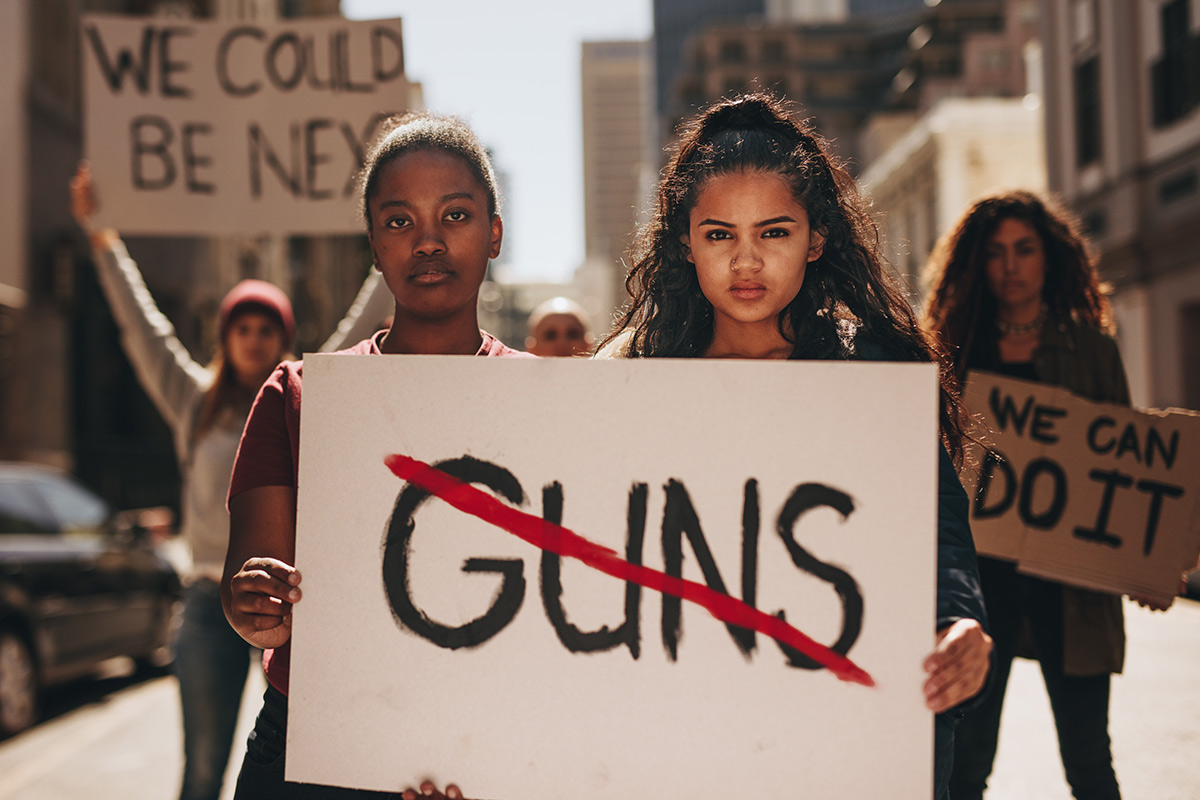By Sonali Rajan
Within a 24-hour period this past weekend, our country suffered four mass shootings. In the first, a gunman killed 22 people (including children) and left dozens more injured at a Walmart in El Paso, Texas. Then hours later, a gunman killed 9 people and left more than two dozen others injured in a popular nightlife area of Dayton, Ohio.
But what unnerves me – what keeps me up at night – is that these mass shootings, horrific as they were, still don’t capture the full scope of gun violence that took place in the U.S. this past weekend.
While we were reeling from the news coming out of El Paso and Dayton, there were multiple shootings taking place in Chicago, including a third mass shooting that injured seven people early Sunday morning. We didn’t hear much about this third incident – an unfortunate result of the frequency of these kinds of events and the fact that crime in certain neighborhoods simply doesn’t garner such media attention.
The gun violence didn’t end there. Later that day, four men were shot in a convenience store in Memphis, Tennessee in yet another mass shooting, just hours after two women were shot on the streets of Morganton, North Carolina. And other forms of gun violence have become so commonplace, they don’t even make the news. For example, each day, on average, 61 people die via gun suicide.
Make no mistake: Gun violence in the U.S. is a public health epidemic. More than 100,000 people are shot with a gun every year, and nearly 40,000 die. Thousands of these are children. And this number doesn’t even begin to take into consideration other forms of exposure to gun violence that undoubtedly have serious long-term implications: hearing gunfire, witnessing gunshots, and/or having a friend or family member who has been killed with a gun, for example.
To quote emergency room physicians, trauma surgeons, and other clinicians who are relentlessly called upon to respond to the daily persistence of gun violence: “The only thing worse than a death, is a death that could be prevented.”
And that’s the point: Gun violence is preventable, and we need to confront gun violence as the largely preventable public health epidemic it is. As educators and education researchers, we must make this public health issue an integral part both of our work and the social justice efforts we champion in and outside of our classrooms. Gun violence is not only taking place in our schools, but, as we saw this weekend, this generation of children is growing up in communities shattered by gun violence on a daily basis. And as we saw in El Paso, some of our most vulnerable communities are being targeted as a direct result of racism and hateful rhetoric, which is antithetical to our values as educators.

Sonali Rajan, Associate Professor of Health Education (Photo: TC Archives)
As my colleagues and I have previously argued, we must pursue and adopt a multi-faceted approach to the prevention of gun violence. Much as we champion efforts to close the achievement gap, reduce rates of drunk driving, and reverse the obesity epidemic, preventing gun violence will require shifts in policy, resource allocation, and programmatic efforts, while acknowledging the systemic factors that exacerbate the problem of gun violence to begin with.
What does that mean for us? It means thinking about solutions to this epidemic creatively and drawing on the expertise of researchers and practitioners across disciplines. It means looking to the excellent work of many – including my colleagues here at Columbia – to implement reasonable policies that might help reduce access to deadly firearms and, by extension, reduce the lethality of mass shootings. And it means advocating for significant federal investments in firearm prevention research so that we can engage in the scientific study of this issue, which is so badly needed.
In the coming days we will learn more details about the perpetrators, the manner in which each of these mass shootings ended, and we will be presented with an accurate body count. We will see the familiar parade of empty thoughts and prayers play out on social media, followed by inaction by many – and worse – indifference. But we can – and should – challenge that indifference and advocate persistently and consistently for efforts that might help contribute to solutions to this kind of violence. As I wrote three years ago in the wake of the Pulse Nightclub mass shooting in Orlando, FL, which claimed the lives of 49 people, the right to be safe is a human right. And this right remains worth fighting for.
Sonali Rajan is Associate Professor of Health Education in the Department of Health and Behavior Studies at Teachers College, Columbia University. She also holds a secondary faculty appointment in the Department of Epidemiology at the Mailman School of Public Health.
